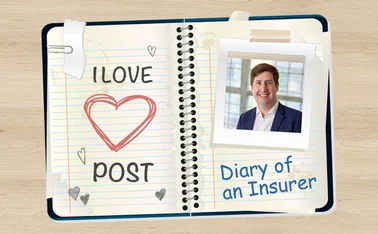
Legal: Driverless cars journey on a bumpy road

Need to know
- The forecast is for a transference of risk from the driver to the car
- The government proposes to include compulsory product liability in insurance for automated vehicles
- In interim period, traditional liability models may not be fit for purpose
Connected and autonomous vehicles are capturing headlines across sectors, none more so than in the insurance industry and at times we could be forgiven for thinking that a hands-off eyes-off car is just around the corner.
The reality is that while Advanced Driver Assistance Systems are certainly becoming more widely adopted, we are unlikely to see truly driverless vehicles on our roads for about 15 years.
Consumer confidence is key to the adoption of ADAS and a recent What Car survey found that more than 50% of consumers would feel unsafe travelling in a fully autonomous car. The fatal accident in May this year, involving a Tesla operating in autopilot mode, will only reinforce such apprehension.
One of the factors that contributed to the Tesla crash was probably the expectation of the driver as to what his car could do. Tesla's advice to drivers is to continue to place their hands on the steering wheel - in this instance the driver failed to do so, and neither he nor the car's systems were able to detect the hazard ahead.
This goes to the very nub of the problems we foresee in the near to medium term as the levels of automation increase. What can a car do, and more importantly, what can a car not do? What are the expectations of the driver as to the vehicle's capabilities and the driver's role in maintaining the vehicle safely on the road? What level of training for drivers will be required? These are issues that are likely to be tested in UK courts as the technology develops and matures.
The forecast is for a transference of risk from the driver to the car, with the risk based on the characteristics of the car rather than the characteristics of the driver, leading to a shift towards product liability issues. That shift is a long way from concluding.
In addition, we must consider the impact of changing models of car ownership, towards subscription or hiring and away from individual ownership. Motor manufacturers are already working with insurers to provide insurance as a bundle with the sale of the vehicle, something that is likely to increase as we move away from the traditional motor policy.
This combination of cover is only likely to continue following the consultation paper published on 11 July by the Department for Transport which proposes changes to compulsory Road Traffic Act insurance.
The government is keen that the UK is at the forefront of this technology in terms of testing and creating the right environment, including regulation. The consultation proposes that the insurance for automated vehicles must include manufacturers' and "any other entities' product liability". There is no appetite for an innocent injured third party to have their claim for compensation held up by arguments for contribution. Furthermore, this additional compulsory product liability must cover injuries to the 'not at fault' driver of the automated vehicle.
The concern is that in this middle period, when drivers do not know what to expect from their own car, let alone other vehicles on the road, collisions are going to occur and the traditional liability models may not be fit for purpose.
The UK insurance industry has a track record of responding to technological change and will have to grapple with the additional challenges of cyber risk, as this technology provides both a solution and a problem. In the medium term, uncertainty rules and perhaps the driverless car is only the poster boy of the fully automated world that lies ahead.
Related whitepapers
• FOIL update: Driverless cars
Only users who have a paid subscription or are part of a corporate subscription are able to print or copy content.
To access these options, along with all other subscription benefits, please contact info@postonline.co.uk or view our subscription options here: https://subscriptions.postonline.co.uk/subscribe
You are currently unable to print this content. Please contact info@postonline.co.uk to find out more.
You are currently unable to copy this content. Please contact info@postonline.co.uk to find out more.
Copyright Infopro Digital Limited. All rights reserved.
As outlined in our terms and conditions, https://www.infopro-digital.com/terms-and-conditions/subscriptions/ (point 2.4), printing is limited to a single copy.
If you would like to purchase additional rights please email info@postonline.co.uk
Copyright Infopro Digital Limited. All rights reserved.
You may share this content using our article tools. As outlined in our terms and conditions, https://www.infopro-digital.com/terms-and-conditions/subscriptions/ (clause 2.4), an Authorised User may only make one copy of the materials for their own personal use. You must also comply with the restrictions in clause 2.5.
If you would like to purchase additional rights please email info@postonline.co.uk








